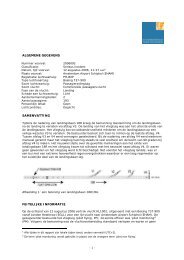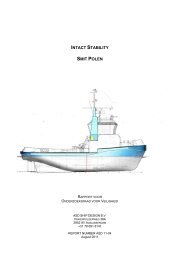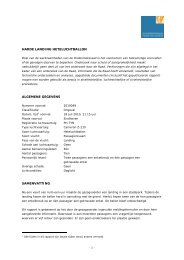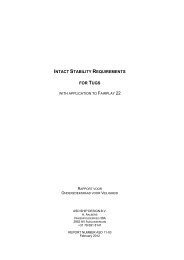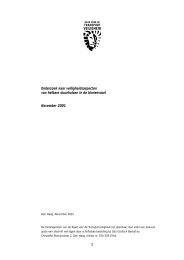Rejected takeoff after the takeoff decision speed 'V ', Boeing B737 ...
Rejected takeoff after the takeoff decision speed 'V ', Boeing B737 ...
Rejected takeoff after the takeoff decision speed 'V ', Boeing B737 ...
Create successful ePaper yourself
Turn your PDF publications into a flip-book with our unique Google optimized e-Paper software.
APPENDIX B: V-SPEEDS<br />
Definitions of V-<strong>speed</strong>s according to <strong>the</strong> US Federal Aviation Administration (FAA) and European<br />
Aviation Safety Agency (EASA) are:<br />
V 1<br />
Maximum <strong>speed</strong> in <strong>the</strong> <strong>takeoff</strong> at which <strong>the</strong> pilot must take <strong>the</strong> first action (e.g., apply brakes,<br />
reduce thrust, deploy <strong>speed</strong> brakes) to stop <strong>the</strong> airplane within <strong>the</strong> accelerate-stop distance. V 1<br />
also means <strong>the</strong> minimum <strong>speed</strong> in <strong>the</strong> <strong>takeoff</strong>, following a failure of an engine at which <strong>the</strong> pilot can<br />
continue <strong>the</strong> <strong>takeoff</strong> and achieve <strong>the</strong> required height above <strong>the</strong> <strong>takeoff</strong> surface within <strong>the</strong> <strong>takeoff</strong><br />
distance.<br />
V R<br />
Rotation <strong>speed</strong>.<br />
Takeoff safety <strong>speed</strong>.<br />
V 2<br />
O<strong>the</strong>r definitions:<br />
V 1<br />
Maximum <strong>speed</strong> at which a rejected <strong>takeoff</strong> can be initiated in <strong>the</strong> event of an emergency and at<br />
which a pilot can safely stop <strong>the</strong> aircraft without leaving <strong>the</strong> runway.<br />
V R<br />
Speed at which <strong>the</strong> pilot makes a control input, with <strong>the</strong> intention of lifting <strong>the</strong> airplane out of<br />
contact with <strong>the</strong> runway or water surface.<br />
V 2<br />
Minimum <strong>speed</strong> that needs to be maintained up to acceleration altitude, in <strong>the</strong> event of an<br />
engine failure <strong>after</strong> V 1<br />
. Flight at V 2<br />
ensures that <strong>the</strong> minimum required climb gradient is achieved,<br />
and that <strong>the</strong> aircraft is controllable.<br />
Current certification requirements and rules require <strong>the</strong> following <strong>speed</strong> conditions:<br />
V 1<br />
must not be greater than V R<br />
.<br />
V 2<br />
may not be less than V R<br />
plus <strong>the</strong> <strong>speed</strong> gained before reaching a height of 35 feet above<br />
<strong>the</strong> <strong>takeoff</strong> surface.<br />
Therefore V 1<br />
is smaller or equal to V R<br />
, which is smaller than V 2<br />
.<br />
Apart from <strong>the</strong> V-Speeds a high and low <strong>speed</strong> regime is also distinguished. The low <strong>speed</strong> regime<br />
is <strong>the</strong> region where <strong>the</strong> air<strong>speed</strong> is below 80 knots. At 80 knots <strong>the</strong> flight crew cross check <strong>the</strong>ir<br />
instruments. Above 80 knots <strong>the</strong> aircraft is in <strong>the</strong> High <strong>speed</strong> regime.<br />
low <strong>speed</strong> regime<br />
high <strong>speed</strong> regime<br />
0 80 V 1<br />
V R<br />
V 2<br />
Figure 13: Schematic overview of <strong>the</strong> V-<strong>speed</strong>s and <strong>the</strong> high and low <strong>speed</strong> regime.<br />
29








